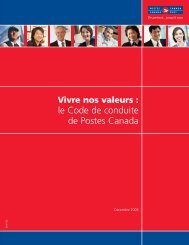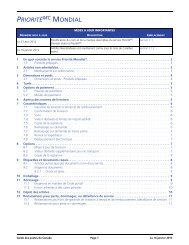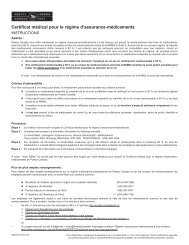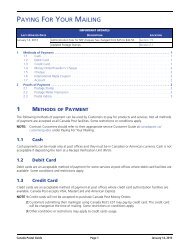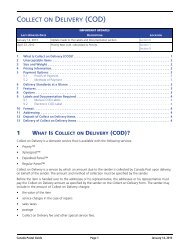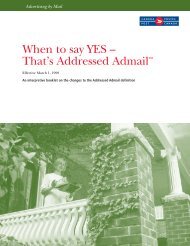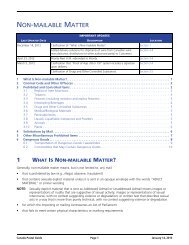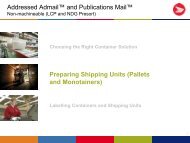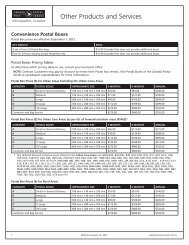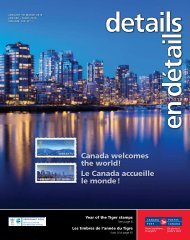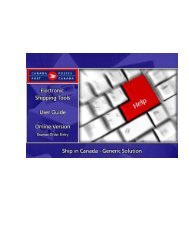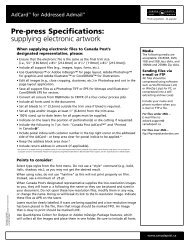Mail Preparation and Presortation Guide NDG Presort
Mail Preparation and Presortation Guide NDG Presort
Mail Preparation and Presortation Guide NDG Presort
You also want an ePaper? Increase the reach of your titles
YUMPU automatically turns print PDFs into web optimized ePapers that Google loves.
<strong>Mail</strong> <strong>Preparation</strong> <strong>and</strong> <strong><strong>Presort</strong>ation</strong> <strong>Guide</strong> – <strong>NDG</strong> <strong>Presort</strong><br />
Figure 16: Groupings Facing the Same Direction<br />
Destination Plant: Établi sement de destination:<br />
3.3.1 LEVELS OF CONTAINERS<br />
The acceptable levels of containers (also referred to as consolidation levels) are:<br />
1. NPS Level 1 – Delivery Facility (DF)<br />
2. NPS Level 2 – City<br />
3. NPS Level 3 – Distribution Centre Facility (DCF)<br />
4. NPS Level 4 – Forward Consolidation Point (FCP)<br />
5. Residue.<br />
Containers are created by putting together groupings that have a common destination <strong>and</strong>/or sortation level<br />
within Canada Post’s network of mail processing <strong>and</strong> delivery facilities. For example, a container may consist of:<br />
• groupings to be delivered on routes in the same letter carrier depot (a DF container)<br />
• groupings to be delivered in the same area, such as a city <strong>and</strong> surrounding area (a City container or DCF<br />
container)<br />
• groupings to be delivered in the same province (an FCP container)<br />
• remaining groupings (a Residue container).<br />
When you prepare a container for its destination, it must be adequately filled to meet our minimum requirements<br />
(see Section 3.3.2 "Filling Containers ").<br />
Groupings placed in containers must meet the consolidation requirements set out in the National <strong><strong>Presort</strong>ation</strong><br />
Schematic (NPS). The level of consolidation will vary depending on the mail volume.<br />
Groupings inside containers must be physically separated by one of the three acceptable methods – bundling,<br />
separator cards, or edgemarking. It is important to maintain the integrity of the presortation when groupings are<br />
placed into containers.<br />
You begin by creating all possible DF containers. Then:<br />
• if not enough groupings remain to create a DF container, create all possible City or DCF containers<br />
• if not enough groupings remain to create City or DCF containers, create all possible FCP containers<br />
• for groupings that cannot be containerized at any other level, create Residue containers.<br />
January 14, 2013 Version 1.2 Page 17



